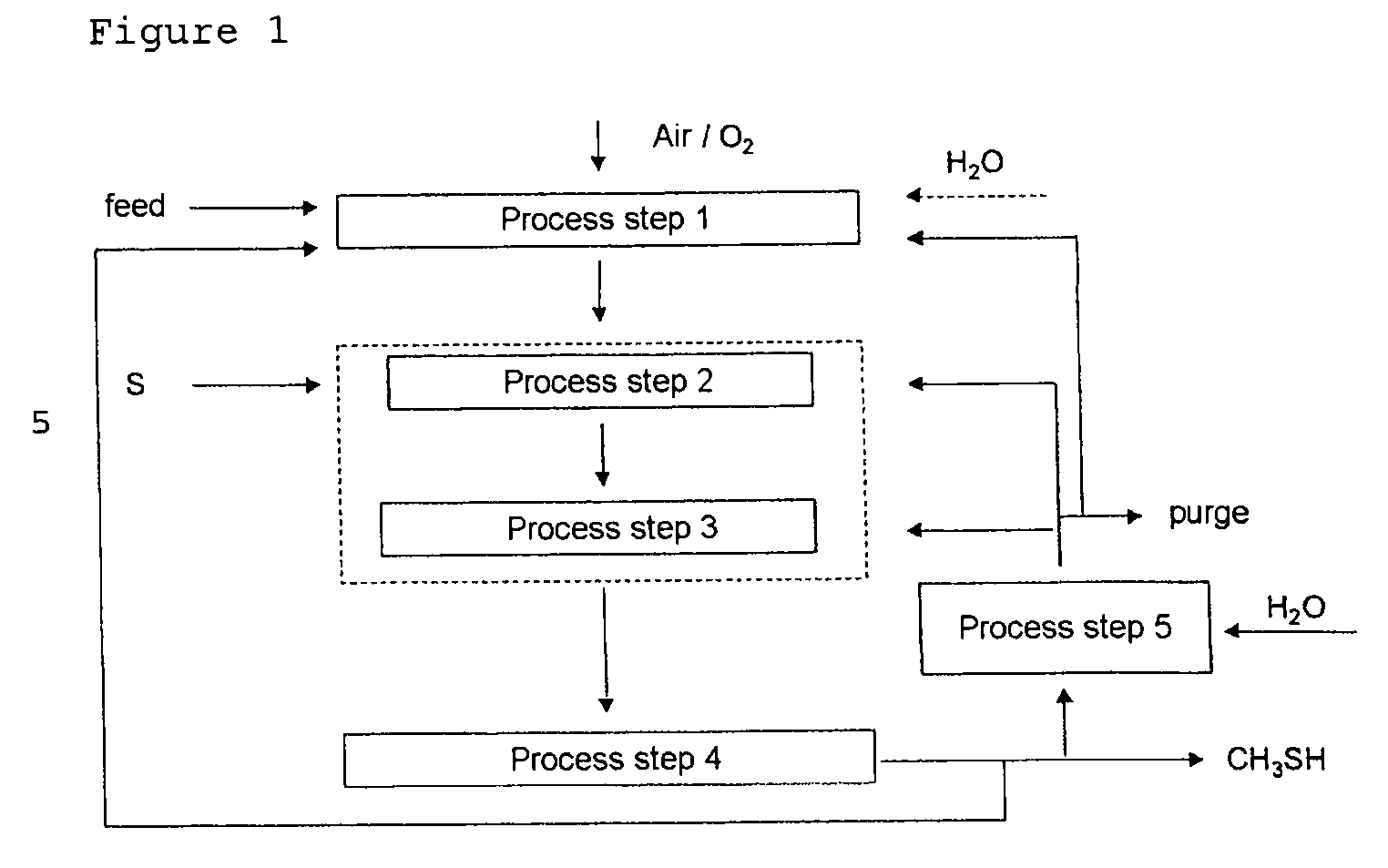Process for continuously preparing methyl mercaptan from carbon- and hydrogen-containing compounds
a technology of methyl mercaptan and carbon-containing compounds, which is applied in the direction of catalyst activation/preparation, metal/metal-oxide/metal-hydroxide catalysts, physical/chemical process catalysts, etc., can solve the problems of significant cost associated with these raw materials and corresponding processes, comparatively low selectivity, and low economic viability of inventive processes. , to achieve the effect of high capital and operating costs, high selectivity, and high selectivity
- Summary
- Abstract
- Description
- Claims
- Application Information
AI Technical Summary
Benefits of technology
Problems solved by technology
Method used
Image
Examples
example 1
[0058]Steam reformation of a hydrocarbon feed gas stream and subsequent reaction with sulfur afforded a gas mixture which comprises the main components CO2 / CO / H2 / H2S in a molar ratio of about 1 / 0.1 / 4 / 4. At a reaction temperature of 250-350° C. and a pressure of 30 bar, the reactants were converted in the third process step over various catalysts. The catalytic activity was initially determined for a single pass through the reactor.
[0059]
TABLE 1Conver-Select-Select-Select-sionivityivityivityCatalyst(CO2) / %(MC) / %(CO) / %(CH4) / %Catalyst A55.882.211.84.5Re2O7 / K2MoO4 / TiO2Catalyst B53.582.69.94.8SnO2 / Re2O7 / K2MoO4 / TiO2Catalyst C50.181.512.63.5MnxOy / K2MoO4 / TiO2MC = methyl mercaptan
example 2
[0060]Methyl mercaptan was removed from the product gas stream in the fourth process step 4 of Example 1. The return gas comprising the main components CO2, H2, CO and H2S was, after reaction with water in the fifth process step, recycled into the third process step and converted under analogous reaction conditions to those described in Example 1. Over catalysts A-C, methyl mercaptan selectivities of 90-94% were remarkably achieved.
PUM
| Property | Measurement | Unit |
|---|---|---|
| pressure | aaaaa | aaaaa |
| temperature | aaaaa | aaaaa |
| pressures | aaaaa | aaaaa |
Abstract
Description
Claims
Application Information
 Login to View More
Login to View More - R&D
- Intellectual Property
- Life Sciences
- Materials
- Tech Scout
- Unparalleled Data Quality
- Higher Quality Content
- 60% Fewer Hallucinations
Browse by: Latest US Patents, China's latest patents, Technical Efficacy Thesaurus, Application Domain, Technology Topic, Popular Technical Reports.
© 2025 PatSnap. All rights reserved.Legal|Privacy policy|Modern Slavery Act Transparency Statement|Sitemap|About US| Contact US: help@patsnap.com


